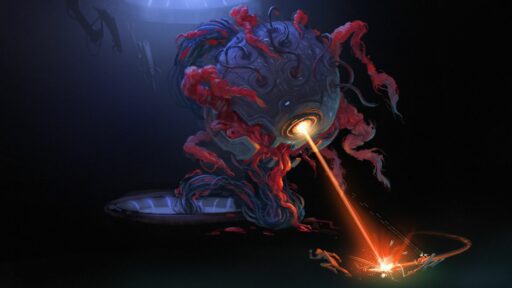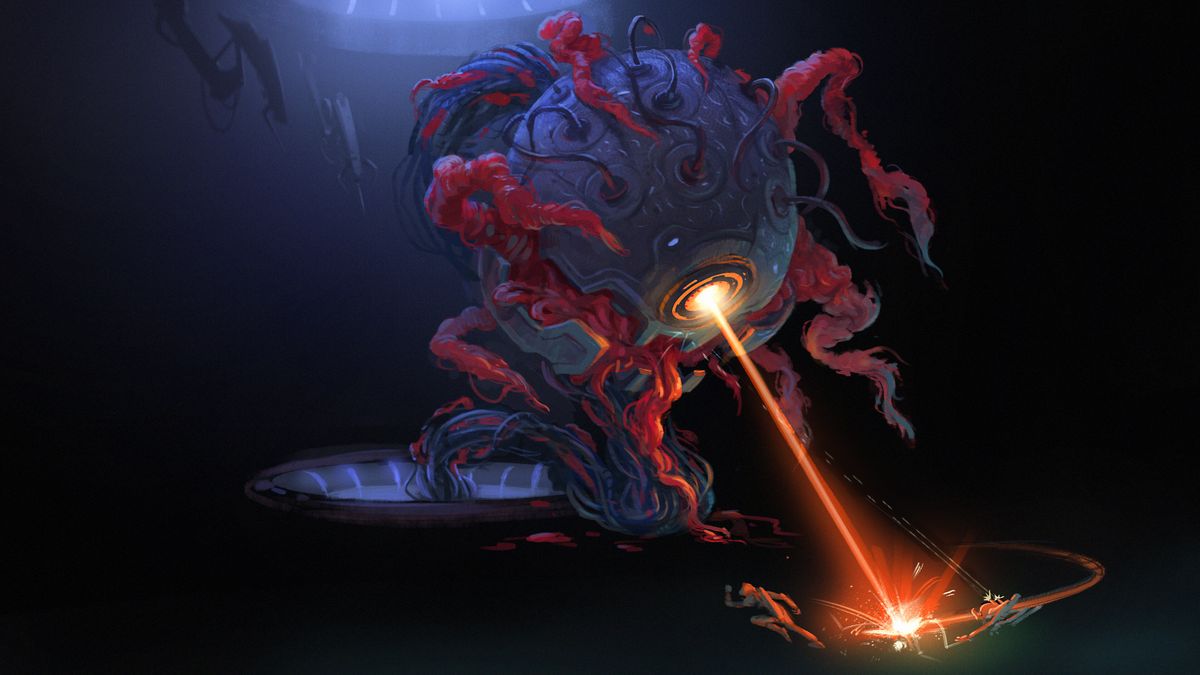In the realm of digital entertainment, sandbox gaming experiences have emerged as a dynamic and immersive genre that captivates players worldwide. Unlike traditional linear narratives, sandbox games empower players with unprecedented freedom to explore, create, and shape their virtual worlds. From Minecraft to Grand Theft Auto, the allure of sandbox gaming lies in its limitless possibilities and the ability to transcend conventional gaming boundaries. In this article, we delve into the essence of sandbox gaming, exploring its origins, its impact on the gaming industry, and the reasons behind its enduring popularity.
Key Takeaways
- Sandbox games epitomize player agency, offering open-ended environments for creativity and imagination without predefined objectives.
- The genre’s evolution can be traced from early innovators like SimCity to the mainstream breakthrough of Minecraft, which expanded the creative potential of gaming.
- Sandbox gaming has influenced the industry by redefining game design, shifting player expectations towards autonomy, and enhancing community engagement.
- The enduring appeal of sandbox games lies in their core elements of freedom, exploration, and the empowerment of players to build and experiment.
- The popularity of sandbox gaming is driven by the lure of control, the thrill of the unscripted, and the rich social dynamics within the community.
Unleashing Creativity: The Essence of Sandbox Gaming

Open Worlds: A Canvas for Imagination
In the realm of sandbox gaming, open worlds represent more than just expansive environments; they are the very essence of player freedom and creativity. These vast landscapes invite adventurers to leave their unique mark, shaping the terrain to reflect their personal vision.
- Exploration and discovery are at the heart of these open worlds, with every corner offering new secrets to uncover.
- Creative expression is not just encouraged but essential, as players build everything from simple homes to complex societies.
- The sandbox mode serves as a free-form space, where the only limit is the player’s imagination.
In this digital sandbox, each placement of a block or a stroke of the brush is a step towards a more personalized space.
The allure of these open worlds lies in their ability to become anything a player desires. From serene landscapes to bustling metropolises, the canvas of imagination is vast and ever-changing. As players engage with these worlds, they craft not just structures, but also narratives and experiences that are uniquely their own.
Player-driven Narratives: Crafting Personal Legends
In the realm of sandbox gaming, player-driven narratives stand as a testament to the genre’s unique ability to empower gamers. Here, every decision and action contributes to the unfolding of a personal legend, a story that is uniquely theirs. This level of engagement transforms the gaming experience into a journey of self-expression and discovery.
- Dynamic Storytelling: Players are not just participants but creators, shaping the direction and outcome of their adventures.
- Creative Tools: A plethora of tools and mechanics enable the construction of complex creations and the engineering of personalized experiences.
- Real-world Value: The integration of new technologies like Web3 and NFTs offers players a stake in their gaming universe, with real-world implications.
Sandbox games are not just about playing; they are about creating, living, and telling a story that is ever-evolving and uniquely personal.
The allure of sandbox games lies in their ability to offer an experience where the player’s choice serves as the narrative ink, writing a game that is never quite the same twice. This not only adds replayability but fosters a deep investment in the game world, as players see their actions and decisions reflected in the environment around them.
Diversification of Gameplay: Catering to Varied Interests
Sandbox games have become a playground for diverse interests, offering a variety of gameplay elements that cater to different player preferences. The gameplay dynamics evolve as players unlock more complex elements, leading to a continuously engaging experience driven by creativity and discovery.
- Art and Craft: Players express their artistic side by designing unique pieces, from serene pottery to grand windmills.
- Sandbox Mode: A free-form space where imagination dictates the creation of personalized spaces.
- In-Game Economics: Players engage in a virtual economy, trading and interacting in ways that can have real-world implications.
- Creative Tools: A diverse array of tools and mechanics, from construction kits to advanced modding capabilities, empowers players to unleash their creativity.
In this digital sandbox, each placement of a block or a stroke of the brush is a step towards a more personalized space. The allure of sandbox games lies in the freedom to not only explore and discover but also to shape the game universe through one’s actions and choices.
Community-driven Content: The Modding Phenomenon
The modding community has become an integral part of the sandbox gaming ecosystem, breathing new life into games long after their initial release. Modders have transformed the landscape of gaming, offering fresh experiences through custom content that ranges from simple cosmetic changes to complex new gameplay mechanics.
- Custom Maps: Enriching the exploration aspect with new terrains.
- Total Conversion Mods: Overhauling games to offer a completely new experience.
- Quality of Life Improvements: Tweaking games to enhance player satisfaction.
The collaborative nature of modding not only extends the lifespan of games but also serves as a testament to the ingenuity and dedication of the gaming community. It’s a symbiotic relationship where developers provide the canvas, and the modders bring an ever-evolving gallery of art to the forefront.
The impact of modding is evident in the longevity of certain titles, which remain relevant and popular years beyond their expected shelf life. This phenomenon has led to the rise of platforms dedicated to mod sharing, further cementing the importance of community-driven content in the realm of sandbox gaming.
Origins and Evolution of Sandbox Gaming

Early Innovators: SimCity and Elite
The genesis of sandbox gaming can be traced back to groundbreaking titles like SimCity and Elite. SimCity (1989), a city-building simulation game, empowered players to design and manage their own metropolises, laying the groundwork for future sandbox games. Elite (1984), a space trading and combat simulator, offered a vast universe for players to explore, trade, and engage in space battles, setting a precedent for open-world freedom.
These early innovators provided a glimpse into the potential of sandbox gaming, where the limitations were set only by the players’ imaginations.
While both games differed in setting and style, they shared a common thread: the freedom to create and influence a virtual world. This concept of player agency would become a cornerstone of the sandbox genre.
- SimCity introduced the joy of creation and urban planning.
- Elite showcased the thrill of space exploration and economic strategy.
Together, these pioneers laid the foundation for a genre that would continue to evolve and captivate gamers for decades to come.
The Minecraft Effect: A Mainstream Breakthrough
The release of Minecraft marked a pivotal moment in the history of sandbox games, catapulting the genre into the mainstream spotlight. Its blocky, pixelated landscapes became the quintessential backdrop for millions of players’ adventures, and its success paved the way for a new wave of sandbox experiences.
Minecraft’s influence extended beyond gameplay, altering the gaming industry’s approach to community involvement and content creation. Players were not only consuming content but also shaping it, leading to a surge in user-generated content and mods.
Minecraft’s legacy is evident in the way it has inspired players to think outside the box, fostering a culture of creativity and collaboration that continues to thrive.
The game’s impact is best illustrated by the following key points:
- It democratized game development by empowering players to become creators.
- Minecraft’s educational potential was recognized, integrating it into schools and educational programs.
- The game’s open-ended nature encouraged a diverse range of playstyles, from survival to construction.
- Its commercial success demonstrated the viability of sandbox games in the market.
Technological Advancements: Fueling Sandbox Complexity
The evolution of sandbox games is inextricably linked to technological advancements. As hardware and software capabilities have grown, so too has the complexity of the worlds that can be created within these games. Developers now have the tools to craft vast, intricate environments that respond dynamically to player actions, creating a more immersive and realistic experience.
- Enhanced graphics and physics engines allow for more detailed and interactive worlds.
- Procedural generation techniques enable the creation of massive, unique landscapes.
- AI improvements lead to more lifelike NPCs and ecosystems.
The synergy between technology and creativity has propelled sandbox games to new heights, offering players a richness of experience that was once unimaginable.
The impact of these advancements is not just technical but also conceptual. They have expanded the very definition of what a sandbox game can be, pushing the boundaries of player engagement and interaction. This has led to a diversification of the genre, with games now offering a multitude of ways to play, from survival and crafting to simulation and combat.
Impact and Influence on the Gaming Industry

Redefining Game Design: The Sandbox Blueprint
The advent of sandbox games has led to a paradigm shift in game design, emphasizing player freedom and procedural generation over linear storytelling and fixed gameplay mechanics. Sandbox games have become the blueprint for innovation, challenging developers to create environments that are not only expansive but also responsive to player actions.
Sandbox titles have redefined the relationship between the player and the game world, making every decision and creation part of an emergent narrative that is unique to each player.
The impact of sandbox games on design can be summarized in the following points:
- Flexibility in Design: Developers are encouraged to build systems that adapt to player choices, leading to more dynamic and personalized gaming experiences.
- Player Empowerment: By giving players the tools to shape their environment, games foster a deeper connection and sense of ownership.
- Endless Replayability: The non-linear nature of sandbox games ensures that no two playthroughs are the same, offering endless possibilities for exploration and creativity.
Shifting Player Expectations: Autonomy and Agency
The landscape of gaming is undergoing a transformative shift, with player autonomy and agency at the forefront. Gamers are no longer mere passengers on a predestined journey; they are the architects of their own adventures, where player actions shape the direction and outcome of the experience. This dynamic storytelling approach enables endless possibilities and encourages players to forge their own paths.
Sandbox games offer a diverse array of creative tools and mechanics, ranging from construction kits to advanced modding capabilities. Whether designing architectural marvels or engineering complex machinery, players can unleash their creativity in myriad ways.
The integration of Web3, NFTs, and blockchain technology is further enhancing this shift, providing players with unprecedented control over their digital destinies. In this new era, players are not just consumers but active participants in virtual economies, crafting, exploring, and shaping the future of gaming.
Community Engagement: Beyond the Game
Sandbox games transcend traditional gaming boundaries, fostering a community-driven ecosystem that extends far beyond the confines of the game itself. Players are not merely consumers; they become contributors, influencers, and even creators within these virtual worlds.
- Collaboration: Gamers unite to build and explore together, forming lasting relationships.
- Sharing: Experiences and creations are shared, inspiring others and sparking innovation.
- Support: Communities rally to support one another, from troubleshooting to mod development.
Sandbox gaming is not just a pastime but a rich, interactive life experience. As we stand at the forefront of this digital revolution, our collective passion for gaming, exploration, and community is the driving force behind these exciting changes.
The integration of technology has paved the way for a more inclusive and engaging gaming ecosystem. This leap forward is setting new standards for community involvement, where every player has the potential to shape the future of gaming.
The Enduring Appeal of Sandbox Gaming

Freedom and Exploration: The Heart of Sandbox Games
At the core of sandbox gaming lies the twin pillars of freedom and exploration. These games offer vast, open worlds that serve as a playground for the imagination, where the only limits are those of the player’s creativity. Players are given the tools to carve out their own paths, discover hidden treasures, and create stories that are uniquely theirs.
Sandbox games stand out by providing a sense of ownership and empowerment, as players become the architects of their own adventures and experiences.
The appeal of these games can be encapsulated in a few key points:
- Unbounded Exploration: Traverse and interact with expansive worlds at your own pace.
- Personalized Storytelling: Craft and live out your own narrative within the game’s universe.
- Creative Freedom: Build, modify, and experiment in environments without predefined objectives.
This unparalleled autonomy has not only redefined the boundaries of gaming but has also established a blueprint for future titles that wish to capture the hearts of freedom-seeking gamers.
Creative Expression: Building More Than Worlds
Sandbox games transcend mere entertainment, offering a canvas where players can simulate, create, and dominate their own universes. The allure of these games lies in the empowerment they provide, allowing for a unique form of creative expression that extends beyond traditional gameplay.
- Art and Craft: Players showcase their creativity, from crafting simple pottery to constructing elaborate structures.
- Sandbox Mode: An unrestricted space for imagination, where every action adds a personal touch to the game world.
In the realm of sandbox gaming, every block placed and every design choice becomes a part of a player’s digital legacy. The game ‘Infinite Craft’ exemplifies this, turning players into cosmic architects who not only build but also engage in complex economic strategies.
The ability to create and customize virtual worlds appeals to players of all ages, fostering a platform for self-expression and artistic experimentation.
The digital sandbox is not just a game; it’s a reflection of the player’s imagination, where the creation of anything from a simple vase to an entire philosophy is possible. The game world becomes a gallery of personal expression, where every creation tells a story and every player is both an artist and an adventurer.
The Infinite Game: Why Sandbox Games Keep Us Coming Back
Sandbox games have a unique charm that lies in their endless replayability. Unlike games with a fixed storyline or a definitive end, sandbox games offer a playground where the only limit is the player’s imagination. This infinite canvas for creativity keeps players engaged for countless hours, as they can always find something new to do, build, or explore.
Sandbox games are not just about playing; they are about creating and living within a world that is ever-evolving and uniquely yours.
The reasons for their enduring appeal can be summarized as follows:
- Empowerment: Players have the freedom to make significant choices that shape their experience.
- Creativity: There is always room for innovation, whether in building, crafting, or storytelling.
- Community: Sharing creations and experiences with others adds a social dimension that enriches the gameplay.
- Discovery: The joy of uncovering secrets, new areas, or even game mechanics keeps the adventure fresh.
These elements combine to form a gaming experience that is as varied and dynamic as the players themselves, ensuring that sandbox games remain a staple in the hearts of gamers around the world.
Reasons Behind the Popularity of Sandbox Gaming

Empowerment Through Gameplay: The Lure of Control
Sandbox games captivate players by offering a unique sense of empowerment. Players become the architects of their own adventures, shaping the world around them with each action and decision. This empowerment is a key factor in the genre’s popularity, as it taps into the human desire for control and mastery over one’s environment.
- Dynamic Storytelling: Players are not just participants but creators, with their choices significantly impacting the game’s direction.
- Creative Tools: A plethora of tools and mechanics are at the player’s disposal, fostering an environment ripe for innovation and creativity.
- Gameplay Evolution: As players progress, they unlock new possibilities, ensuring a continuously engaging and evolving experience.
In the realm of sandbox gaming, the journey is as significant as the destination. The process of discovery and creation is a testament to the player’s autonomy, offering a deeply personalized and rewarding experience.
Infinite Possibilities: The Allure of the Unscripted
The essence of sandbox gaming lies in its ability to offer a canvas where the only limit is the player’s imagination. Infinite Craft exemplifies this principle, providing a platform for limitless creativity and exploration. The game’s popularity surged as influencers like xQc showcased its vast crafting system, inspiring players to delve into a world where anything is possible.
- Infinite Craft encourages combining elements to create complex entities.
- The game is as much about discovery as it is about the art of crafting.
Infinite Craft has not only carved a niche in the gaming world for its entertainment value but also for its potential in personal growth. Players engage in critical thinking, experimentation, and exploration, learning to navigate the staggering array of crafting combinations.
Sandbox games epitomize player agency, fostering a sense of ownership and empowerment as players become architects of their own virtual realms.
Social Dynamics: Sharing the Sandbox Experience
Sandbox games excel in creating a shared space where players can interact, collaborate, and build communities. These virtual playgrounds become social hubs, where friendships are formed and social skills are honed. The collaborative nature of sandbox games often leads to impressive collective projects that would be impossible for a single player to achieve alone.
- Community and Collaboration: Players unite to construct elaborate structures, solve complex challenges, and share resources.
- Economic Interactions: In-game economies allow players to trade, barter, and establish a marketplace for their creations.
- Social Events: Communities organize events, competitions, and social gatherings, enhancing the game’s longevity.
Sandbox games not only provide a platform for entertainment but also serve as a catalyst for social interaction and community building. The joy of sharing successes and overcoming obstacles together is a fundamental aspect of the sandbox experience.
Conclusion: The Infinite Canvas of Sandbox Gaming
As we’ve explored throughout this article, sandbox games have become a cornerstone of modern gaming, offering players an unparalleled canvas for creativity and exploration. These games have evolved from niche beginnings to become cultural touchstones, influencing not only the gaming industry but also the way we think about interactive entertainment. The rise of sandbox gaming is a testament to the human desire for freedom and self-expression in digital spaces. As technology advances and the boundaries of these virtual worlds expand, we can only imagine the infinite possibilities that future sandbox experiences will bring. It is an exciting time for gamers and developers alike, as we continue to push the limits of what is possible in these ever-evolving digital playgrounds.
Frequently Asked Questions
What defines a sandbox game?
A sandbox game is characterized by its open-world environment, providing players with freedom to explore, create, and interact with the game world without strict objectives or limitations. It emphasizes player agency and creativity.
How did sandbox games originate?
Sandbox games originated with early innovators like SimCity and Elite, which offered open-ended gameplay. However, the genre gained significant popularity with the release of Minecraft, which brought sandbox gaming into the mainstream.
What impact have sandbox games had on the gaming industry?
Sandbox games have redefined game design by emphasizing player autonomy and creativity. They have shifted player expectations towards valuing freedom and agency in gameplay and have fostered extensive community engagement through modding and shared experiences.
Why do sandbox games remain popular?
Sandbox games offer a unique blend of freedom, exploration, and creative expression that resonates with players. The ability to create and shape their own experiences within the game keeps players engaged and coming back for more.
How do sandbox games empower players?
Sandbox games empower players by giving them control over the game environment. Players can build, customize, and experiment within the game world, leading to a sense of ownership and empowerment as they become architects of their own virtual realms.
What role does the community play in sandbox gaming?
The community is crucial in sandbox gaming, contributing to the creation of user-generated content such as mods, custom maps, and new gameplay mechanics. This collaborative ecosystem enhances the game’s longevity and keeps the gameplay experience fresh and dynamic.




